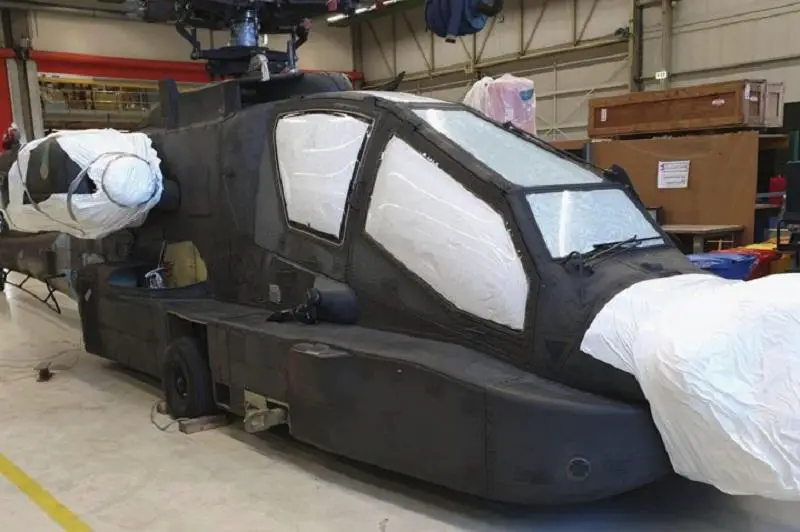In February 2018, the Netherlands requested that all its AH-64Ds to be remanufactured to the E configuration, along with 17 APG-78 fire control radar units. The first 3 Apache AH-64D Attack Helicopters of the Ministry of Defense left by boat from Antwerp to the United States. In February 2018, the Netherlands requested that all its AH-64Ds to be remanufactured to the E configuration, along with 17 APG-78 fire control radar units.
The AH-64Ds there undergo a so-called remanufacture, a process that takes about 2 years. All 28 Defense Apaches will undergo a complete rebuild and overhaul in the coming years. The Apaches come with the most advanced configuration. The power also increases. After the upgrade, the helicopters can be deployed until 2050, with the exception of a single upgrade.
Because whoever thinks it is a matter of loading and shipping is wrong. In recent weeks, the helicopters have been so disassembled that they hardly resemble an Apache. On Tuesday, trucks drove the dismantled airframes from the Woensdrecht logistic center onto the ship. The rest of the process has been handed over by Defense, also because of the corona crisis, to the US Army, which takes over many tasks. The fleet is scheduled to arrive at the port of Baltimore on the US East coast on December 4. From there, they will be transported to Huntsville, Alabama, and the last stop is manufacturer Boeing in Mesa, Arizona. The Apaches have been disassembled before departure. The helicopters destined for Defense Helicopter Command will return to the Netherlands from mid-2023 to early 2025.

The Dutch government initially showed an interest in acquiring Apache helicopters in the late 1980s, when it stated that it may purchase as many as 52. A competition held in 1994 against the Eurocopter Tiger and the Bell AH-1 SuperCobra led to the Royal Netherlands Air Force ordering 30 AH-64D Apaches in 1995. Deliveries began in 1998 and ended in 2002. The RNLAF Apaches are equipped with the Apache Modular Aircraft Survivability Equipment (AMASE) self-protection system to counter infrared (IR) missile threats. The RNLAF Apaches’ first deployment was in 2001 to Djibouti, Africa. They were also deployed alongside U.S. AH-64s in support of NATO peacekeeping forces in Bosnia and Herzegovina. In 2004, six Dutch AH-64s were deployed as part of the Netherlands contribution to Multinational force in Iraq to support the Dutch ground forces.
The U.S. State Department has approved a possible Foreign Military Sale (FMS) to the Netherlands of items and services to support the upgrade/remanufacture of AH-64D Block II Apache Attack Helicopters to the AH-64E configuration for an estimated cost of $1.191 billion. 28 AH-64D Block II Apache Attack Helicopters to the AH-64E configuration to include upgrading 51 remaining T700-GE-701C Engines to T700-GE-701D (42 engines to be installed, 9 spares), 17 AN/APG-78 Fire Control Radar (FCR) and subcomponents, 28 AN/ASQ-170 Modernized Target Acquisition and Designation Sights (MTADS)/AN/AAR-11 Modernized Pilot Night Vision Sensors (PNVS), 28 AN/APR-48B Modernized Radar Frequency Interferometers (MRFI), and 70 Embedded Global Positioning System/Inertial Navigation Systems (EGI) plus Multi-Mode Receiver.
















